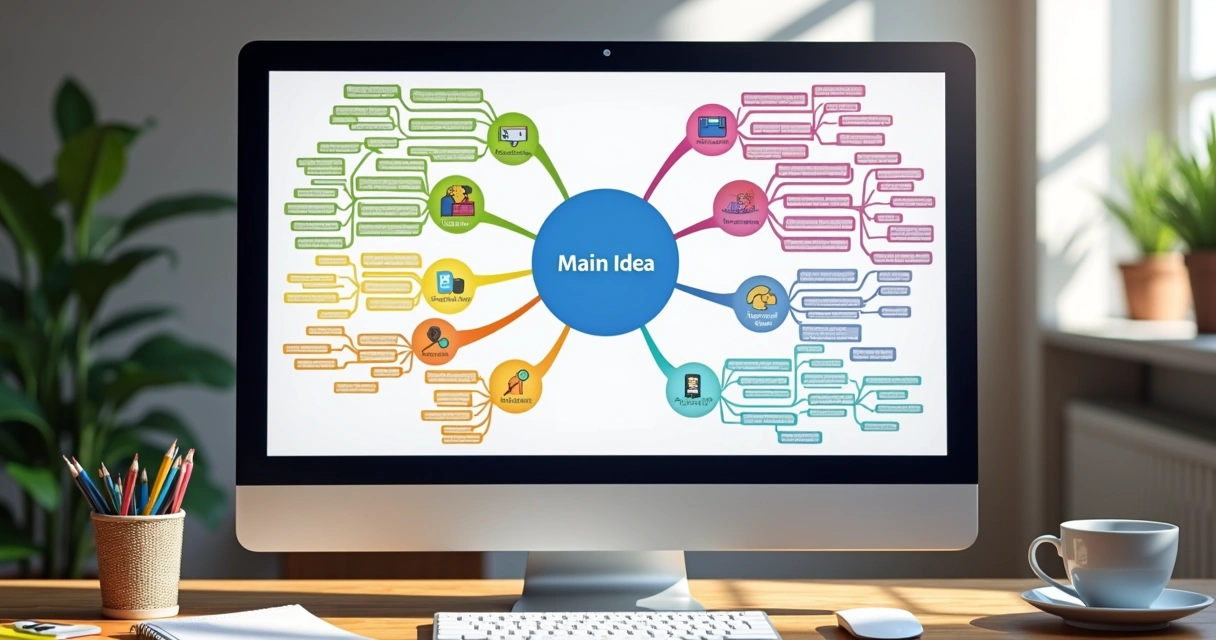
How To Create Mind Maps For Better Learning And Organization
Most people have felt scattered trying to study for exams or plan a big project. Notes pile up, tasks feel disjointed. Sometimes, ideas seem to flicker away as fast as they arrive. Mind maps, or visual diagrams that organize data around a central theme, offer a different approach. These diagrams unfold in a web from a core idea, letting your thoughts branch out as freely as they arise, reflecting the way the human brain really thinks.
Research has consistently found that visual mapping tools boost understanding and help keep thoughts organized. According to Wikipedia’s article on mind mapping, this process is non-linear, capturing relationships in a way that lists or blocks of text usually can’t.
What mind maps are (and what they’re not)
Think of these diagrams as a living sketchbook for your thoughts. With a theme or topic in the middle, ideas radiate outward in all directions, almost like the roots of a tree. Each branch shows how subtopics connect to each other. This layout stands in contrast to concept maps, which also display links between ideas but with a focus on structured connections and sometimes even cross-links, making them more like a web for exploring relationships (concept map comparison).
A mind map is flexible, open-ended, and flows with your thinking.
In practice, both styles have benefits, though studies show that mind maps may be especially helpful for students looking for flexible, creative ways to remember things and make sense of large amounts of information (mind mapping strategies study).
Steps to create a digital mind map
Most of us turn to digital tools instead of pen and paper. Here are quick steps to build your own visual maps:
- Start with a single central topic. Place the main idea, project, or subject at the center of the screen.
- Add branches for key subtopics. Draw lines outward, each labeled with a major supporting concept or task.
- Expand with details. Break down subtopics into smaller concepts, facts, or action items. Color-code or use icons for clarity.
- Make it interactive. Move branches, group notes, collapse secondary ideas, or make connections between different branches as new links emerge.
- Integrate external resources. Add links, images, or even files to branches for deeper context.

Platforms like NodeLand use artificial intelligence to transform plain notes into engaging, interactive diagrams. The AI can answer questions right in the visual map, summarize long documents on the fly, and help you spot connections you might have missed otherwise. This isn’t just neat, it makes the information more memorable.
Why visual mapping can deepen learning
Students and professionals alike see clear benefits from this approach. Studies point to improved understanding and retention when using this strategy. Visual mapping aids actively engage memory and let you structure information in a way that makes sense to you.
- Exam prep: Turn chapters into maps, then use the visual layout to quiz yourself or fill gaps.
- Project planning: Look at tasks or goals branching off from the plan’s core, then break every goal down.
- Meeting notes: Instead of linear notes, map out the agenda and ideas so connections stay clear.
- Document summaries: Use AI features to pull out key highlights, then organize them in the visual space for easy review.
I’ve found that starting with a blank visual map and just adding whatever comes to mind, even if it seems random, often reveals unexpected relationships. Sometimes, themes or questions pop up only after seeing everything laid out.
Tips and getting a quick start
If staring at a white canvas feels intimidating, try a ready-made template or a guided example. Many people start by searching for a tutorial that walks through making a visual map from zero. Templates show common structure, for essays, weekly planning, research projects. On nodeland, you can try a prepared template, see real-life maps, and learn gradually.
A visual map isn’t just for school, it’s a tool for everyday thinking.
Ready to organize your ideas, notes, and projects in a more visual (and interactive) way? Sign up for nodeland and see how mapping your thoughts can change the way you learn, remember, and get things done.
Frequently asked questions
What are mind maps used for?
People use these diagrams to organize thoughts, brainstorm, plan projects, study topics, and summarize information. They help spot relationships and keep ideas clear and connected.
How do I create a mind map?
Start with a main idea in the center. Add branches for related concepts or tasks. Keep building outward with details. Digital tools let you move, color, and link branches, making the map interactive.
Are mind maps effective for studying?
Yes, research (like the study on mapping strategies) shows students often remember more and make better connections with this method.
What tools help make mind maps?
Online platforms like nodeland offer digital mapping, AI features, and templates. These make it easier to create, edit, and share visual maps on any device.
What are the best tips for mind mapping?
Start simple. Use colors and icons for clarity. Don’t worry about making it perfect. Try templates to save time, and let your map grow as your ideas develop.